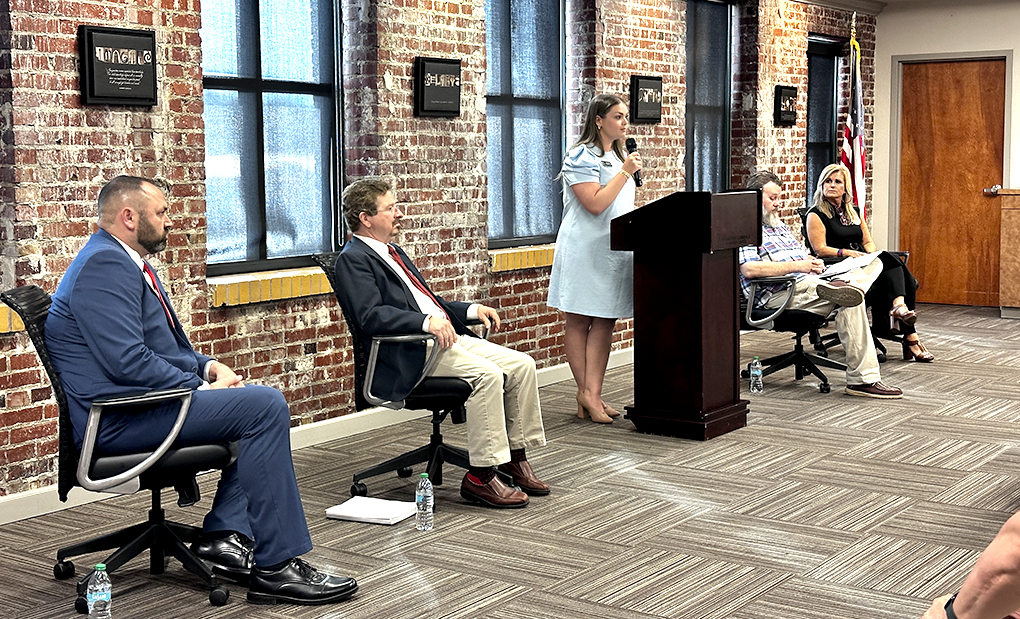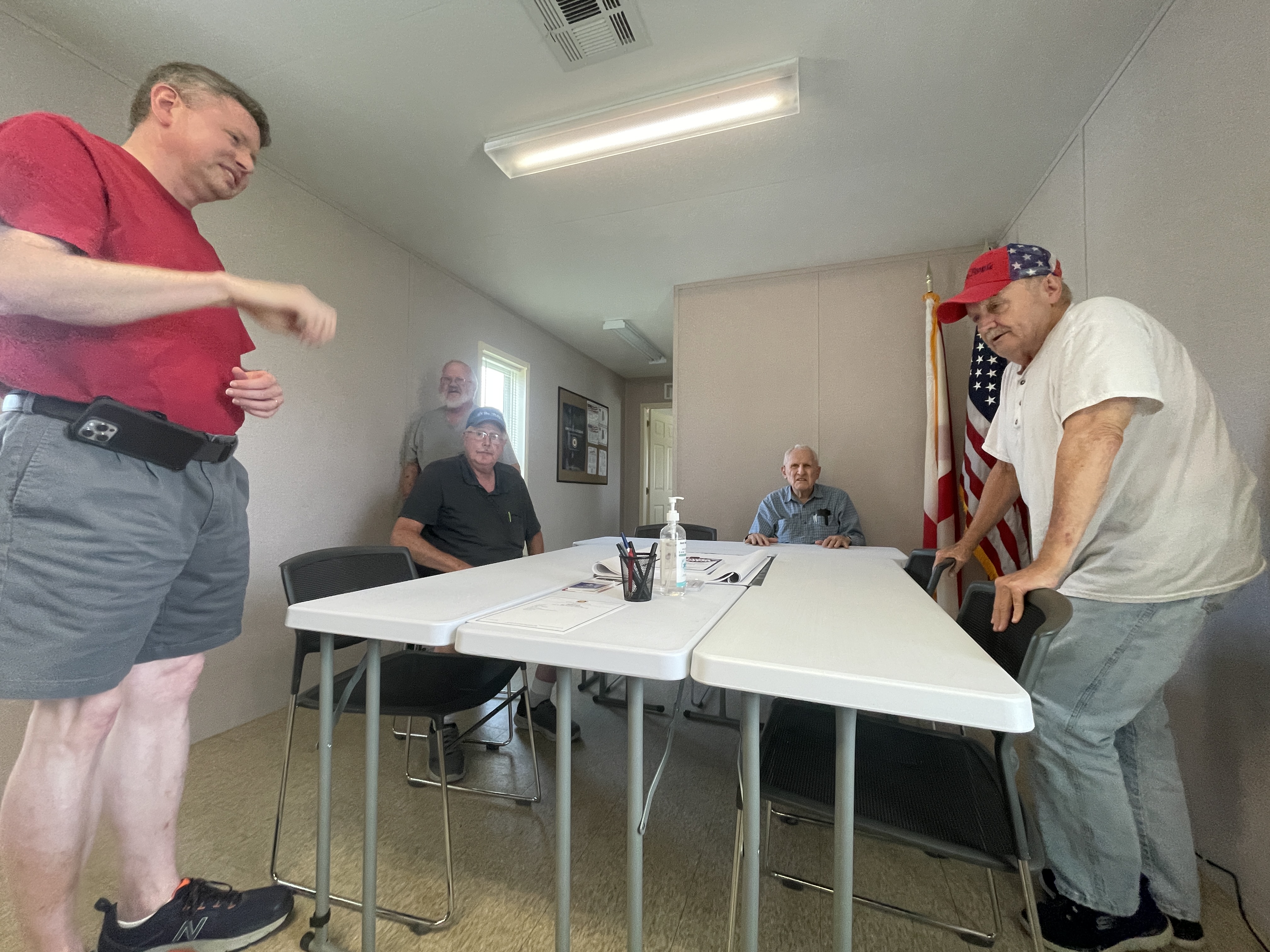Truck traffic, heavy cargoes bear down on Oklahoma highways, officials warn
Published 2:45 pm Monday, December 21, 2015

- Truck traffic, heavy cargoes bear down on Oklahoma highways, officials warn
OKLAHOMA CITY — Nearly eight years after the state announced an ambitious plan to jump-start its monitoring of truck cargo, inspections occur on a limited schedule, while plans to build many state-of-the-art weigh stations are essentially idled.
At the same time, truck traffic is burgeoning along Oklahoma’s highways and interstates, as is the cost of road and bridge repairs that inspections are meant to keep in check.
State officials are urging a new look at fees for trucks traveling through Oklahoma and fines for those caught with over-sized or unbalanced loads — now well below other states. Those fines help pay for the inspection program, including maintenance of the weigh stations, many of which have seen better days.
Charlie Joyner, chair of the House of Representative’s Transportation Committee, said he will recommend that the Legislature take a close look at at the fees and fines. Oklahoma’s relatively low fine and fee schedule, he said, “is not something to be proud of.”
At the same time, he said the state is doing a better job of cracking down on illegal truckers, who are known to drive 10 miles out of their way just to avoid paying fees, by allowing mobile enforcement.
Oklahoma’s share of federal highway money — currently about $612 million per year — depends upon an annual certification that it conducts “adequate enforcement” of truck size and weight limits, said Nancy Singer, a spokeswoman for the Federal Highway Administration.
That’s defined as operating inspection stations and having at least two methods of deterring law-breakers, she said.
The Highway Administration has approved Oklahoma’s enforcement plan for next year, Singer said. In addition to operating inspection stations, albeit on limited schedules, Oklahoma has a team of mobile enforcers who drive around the state and stop trucks.
Oklahoma once had a loftier vision of how it would monitor truck traffic, but plans are moving more slowly than anticipated due to a lack of funding and a bureaucratic tangle of agencies that are involved.
In January 2008, the state Corporation Commission and Department of Transportation announced plans to spend $61 million over six years to build nine state-of-the-art inspection centers at borders where tractor-trailer traffic is heaviest.
The goal was to protect Oklahoma’s roads and bridges from the wear and tear created by overweight and illegal trucks.
Nearly eight years later, records show just three of those so-called ports of entry stations are open.
And despite the intent to operate them 24 hours a day, 7 days per week, the program doesn’t have sufficient money to staff any station more than 19 hours per day.
That leaves many trucks — 60 to 80 per hour travel through the older facilities, and 180 to 200 trucks per hour through newer ones — to pass through the state unchecked.
State transportation officials say that Oklahoma has long had a reputation as a haven for trucks with overweight loads, faulty safety features, forged log books, inaccurate registration documents or that are not properly permitted.
Tyler Boyd, a spokesman for the Department of Transportation, said the inspection program, once implemented, will pay for itself in protecting highways and bridges, and saving in maintenance costs.
“It’s a good deal for the taxpayers, really, if we can keep the highways in good condition, rather than having to do major reconstruction if they deteriorate,” he said.
But, as things now stand, enforcement is spotty. The state inspects trucks at seven points, usually in both directions of travel, but only for limited hours.
Existing stations are closed in Woodward and along one side of Interstate 40 in the busy corridor at El Reno.
A station in the Panhandle town of Boise City is all-but-unusable since a truck struck the building and its floor crumbled. Also, the scales there are unreliable, said Matt Skinner, a spokesman for the Corporation Commission.
Agents in Boise City have weighed 39 trucks in the last six months, Skinner said. That’s equal to the traffic in 10 minutes at an active station.
Older weigh stations are all closed on weekends.
In addition, the number of officers assigned to police commercial vehicles has dropped 15 percent in the past five years, according to a state analysis.
Despite these limited resources, the analysis by the Transportation Department found a more than 30 percent increase in violations written for tractor-trailers — from 19,111 in the 2009-2010 budget year to 25,142 four years later.
Violations for overweight or oversize trucks increased more than 100 percent during that period.
The number of trucks crossing Oklahoma’s major highways has steadily grown, as well, and is expected to continue to grow 3 percent each year for the next three decades, according to the study.
Half of all vehicles on rural stretches of Interstate 40 are trucks.
Plans are in the works to fix inspection stations in El Reno and Boise City, but the state has been mired in a lawsuit over the bidding process, Skinner said.
An updated station is under construction at the southernmost tip of Interstate 35 in Love County. That project costs $9.5 million. The station is scheduled to open next fall.
Boyd said other inspection stations are planned.
“We’re currently just waiting on funding to accumulate,” he said, adding that the schedule of new stations announced seven years ago was “really ambitious.”
Some of the inspection program’s struggles are bureaucratic.
Rather than putting the program under the aegis of a single agency, as many states do, Oklahoma lawmakers have handed responsibilities to four departments.
The Department of Transportation builds and maintains inspection stations. The Corporation Commission staffs them and oversees permitting of trucks. The Turnpike Authority handles turnpike matters. The Department of Public Safety operates a full-time team of troopers for enforcement.
Another hurdle is funding.
A one-cent tax on fuel pays for new inspection stations, but lawmakers cap the Transportation Department’s share of that money at $500,000 per year, according to the Corporation Commission.
The rest goes toward environmental remediation when underground storage tanks leak, the Department of Environmental Quality, the attorney general’s office and tribes.
The Transportation Department last year received another $1 million in revenue from fines and permits. It cannot legally spend that money for road repairs but instead must use the money for upkeep of existing inspection stations, officials say.
“They’ve always kind of fought a losing battle trying to keep things going,” Skinner said.
A more aggressive structure of permit fees and fines for overweight trucks could at least help sagging, existing inspection stations, officials said.
Oklahoma’s permit fees — a standard $100 annually plus an additional public safety fee, which starts at $40 — lag many other states, according to the Transportation Department analysis, which was presented to lawmakers earlier this year.
During a hearing on Oct. 27, transportation officials urged lawmakers to reassess fines for truckers operating illegally, which are also low.
Other states charge $25 to more than $2,000 in fines. Oklahoma’s maximum fine is $500.
Meanwhile, transportation officials say the costs of highway and bridge maintenance increased 22 percent over the past six years.
The state spent $100 million last budget year on routine maintenance. That paid for highway and bridge repair as well as snow and ice removal and mowing, according to the Department of Transportation.
Those costs are expected to continue to grow due to damage from overweight trucks, officials warn.
Joyner said he planned to meet with the state’s transportation officials before the start of the session to discuss the program.
“You can always say you can do better,” he said. “I think the system now is pretty good (but) I haven’t talked to anyone in a while about it.”
Janelle Stecklein covers the Oklahoma Statehouse for CNHI’s newspapers and websites. Reach her at jstecklein@cnhi.com.





